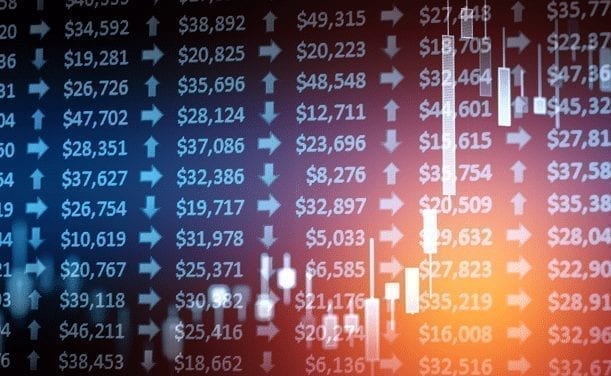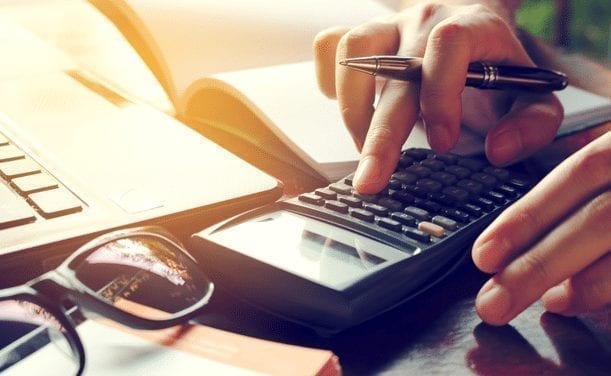
Margin Explained
Buying on margin helps you control a significantly larger position size than your initial trading account would normally allow. In essence, your broker lends you the needed funds to get a larger exposure in the market and puts a part of trading account aside as the collateral for the loan. The part of your trading account put aside is called the “margin”, and trading with funds borrowed from your broker is call “margin trading”. The amount your broker puts aside as the margin depends on the leverage you use. The following table shows the different margin requirements for the most popular leverage ratios.
| Leverage Ratio | Margin Requirement as % |
| 1:1 | 100% |
| 2:1 | 50% |
| 10:1 | 10% |
| 20:1 | 5% |
| 50:1 | 2% |
| 100:1 | 1% |
| 200:1 | 0.5% |
| 400:1 | 0.25% |
As shown in the table, if your leverage ratio is 1:1, the margin requirement would equal to 100% of your trading account. In other words, the maximum position size you’re able to open would equal to the size of your trading account. On the contrary, using an extremely high leverage ratio of 400:1 would allow you to control a position size 400 times larger than your trading account size. The margin requirement to open a trade with a 400:1 leverage ratio is only 0.25%, i.e. you have to put aside only 0.25% of the total trade size as the required margin.

What is Margin Trading?
As we already said, your total purchasing power depends on the maximum leverage ratio that your broker offers. The following table shows how much money you can control with a margin of $1,000, depending on the leverage ratio used.
| Leverage Ratio | Margin Used as $ | Purchase Power |
| 1:1 | $1,000 | $1,000 |
| 2:1 | $1,000 | $2,000 |
| 10:1 | $1,000 | $10,000 |
| 20:1 | $1,000 | $20,000 |
| 50:1 | $1,000 | $50,000 |
| 100:1 | $1,000 | $100,000 |
| 200:1 | $1,000 | $200,000 |
| 400:1 | $1,000 | $400,000 |
Let’s say your broker offers you a leverage of 20:1 to buy stocks on margin, which means that you can control up to $20,000 with a trading account size of only $1,000. If a stock that you want to buy trades at $10, you could buy as much as 2,000 stocks with only $1,000! Compare this with the situation where you’re not buying on margin – $1,000 would be enough for only 10 stocks.
Many beginners in trading think about margin as a transaction cost, which is far from the truth. The amount of margin needed to open a leveraged position is only put aside as a collateral for the trade and is returned to your account once the trade is closed.
The leverage ratio that your broker offers usually depends on the asset you want to trade. While currencies feature the largest leverage, sometimes up to 800:1, stocks are usually offered with a leverage of around 20:1 and in the form of CFDs.
CFDs – The Most Popular Leveraged Instrument
In order to be able to trade on margin, most retail brokers offer Contracts for Difference (or CFDs) on popular stocks, stock indices, commodities and other assets. Contracts for Difference track the price of the underlying asset, and the broker credits or debits your trading account based on the difference between the entry price for which you bought the asset, and the exit price when you close your position. If you bought a CFD on Apple stocks and the price rises, you’ll be in profit after you close your trade. Similarly, if the price falls below your entry price, you’ll be in loss.
When trading on CFDs, you don’t own the underlying asset. You only speculate on whether its price will go up or down. That being said, there are some notable advantages of trading on CFDs, such as buying on margin and short-selling. Short-selling CFDs allows you to profit from a fall in the price of the underlying asset. Basically, if your analysis shows that the price of a stock should fall, you could short-sell the stock’s CFD and profit from the difference of the higher entry price and the lower exit price.
Finally, trading on margin allows you to increase your exposure to the market with a relatively small trading account, which in turn magnifies your potential profits (but also your potential losses).
Risks of Trading on Margin
The question “What is margin trading?” cannot be fully answered without touching on the risks associated with it. While margin trading does provide significant profit potential by increasing your overall market exposure, you need to be aware that it also carries certain risks. The largest risk you face is that your leveraged trade goes against you, because margin trading magnifies both your profits and losses.
If we take our example from the beginning of this article, a 20:1 leverage ratio would allow you to buy up to 2000 stocks priced at $10 each with a trading account of only $1,000. Let’s say you buy 1000 stocks instead, which still amounts to $10,000 of market exposure. If the price of the stock
rises to $11, you would end up with a profit of $1,000 (1,000 stocks x $11 = $11,000). But if the price falls to $9, you would lose your entire trading account as the loss would be equal to $1,000 and face the so-called “margin call” (1,000 stocks x $9 = $9,000).
In order to control your risk when trading on margin, we’ll cover some basic risk management guidelines below. For now, let’s explain what a margin call is and provide some tips on how to avoid it.
What is a Margin Call?
A margin call happens when your leveraged trades go against you and your trading account size falls below the initial margin requirements. As a result, your broker will automatically close all open positions and all that will be left in your trading account is the initial margin used to open those positions.
Let’s explain this with an example. If a stock trades at $10 and you buy 500 stocks with a 20:1 leverage and a $1,000 trading account, your total market exposure would equal to $5,000. The required margin to open this trade is determined by the leverage, and equals to 5% of the total trade size (5% x $5,000 = $250).
So, out of your $1,000 trading account, $250 is put aside as a margin for buying 500 stocks per $10. This means that you have $750 left as “free margin”, which is used to open additional leveraged trades, and to withstand any negative price fluctuations on your existing trades.
Now, let’s imagine that the price of the stock fell to $9. Your position would now be worth $4,500, and you would face a loss of $500. However, as your free margin is still large enough to withstand this loss, your trade would remain open. But, if the price falls further down to $8.5, your total loss would be equal to your free margin and you would likely get a margin call from your broker.
How to Manage Risks and Avoid Margin Calls?
Managing the risks of buying on margin must be a part of your trading plan. While you can make significant profits with margin trading, you can also easily accumulate hefty losses. Here are some effective ways to prevent this from happening:
- Adjust your position size – Although margin trading allows you to open a much larger position than the size of your trading account, the first rule of successful trading is to preserve your capital. Risk only a small amount of your trading account per each trade – the golden rule is not to exceed 2% of risk-per-trade. This means, if your account size is $1,000, you don’t want to risk more than $20 per leveraged trade.
- Always use stop-loss orders – Stop-loss orders automatically close your position once the price reaches the specified target. This helps to control your losses, and it can also be used to calculate the appropriate position size of your trade.#
- Stick to a profitable reward-to-risk ratio – Research has shown that traders who follow a reward-to-risk ratio of more than 1 are more profitable in the long-run. A reward-to-risk ratio is simply the ratio of your potential profits and your potential losses. If you risk $50 on a trade but aim to make $100, the trade’s reward-to-risk ratio would equal to 2. This means that you can have two losing trades and only one winning trade, and still remain at breakeven.

The Relationship Between Balance, Equity, Margin and Free Margin
To fully understand all aspects of buying stocks on margin, you need to learn how your balance, equity, margin and free margin are related to each other.
- Balance – The balance of your trading account is the total size of your account when no trades are open. This is the maximum amount you have in your trading account, ready to be withdrawn.
- Equity – Your equity equals your balance only in times when you don’t have any open trades. The moment you open a trade, your equity will reflect all unrealized profits and losses. We call these profits/losses unrealized as long as the trade is open – after you close the trade, all profits or losses will become realized and added or deducted to your balance.
- Free Margin – Your free margin is the amount of capital you can use to open additional trades on leverage and to withstand negative price fluctuations on your open trades. Your free margin equals to your equity minus used margin, which means that it fluctuates together with all unrealized profits and losses. This is an important point to understand – your free margin is directly influenced by your available equity which reflects any unrealized profits/losses.
- Margin – Finally, your margin is the collateral put aside by your broker, and depends on the used leverage ratio.
Control a Larger Market Position with Margin
The industry of retail trading is heavily based on margin. It allows traders and investors with small trading accounts to control a relatively large position on the market, depending on the utilized leverage ratio. A leverage ratio of 20:1, which is commonly offered by online brokers for trading CFDs on stocks, allows you to get a twenty times higher exposure than the size of your trading account.
Still, trading on margin carries significant risks of which traders need to be aware of. Leverage magnifies both your potential profits and losses, so you need to have strict risk management guidelines in place to protect your principal. Some of the most effective ways to do so is to risk only a small percentage of your capital per trade, to always use stop-loss orders and to only initiate trades which have a reward-to-risk ratio larger than 1.
Finally, to fully exploit the advantages of margin trading and to better understand the associated risks, we covered the relationship between your balance, equity, unrealized profits/losses, free margin and used margin. Only by fully understanding how to protect yourself from negative price fluctuations and margin calls will you be able to enjoy the advantages of trading stocks on margin.
PEOPLE WHO READ THIS ALSO VIEWED:
